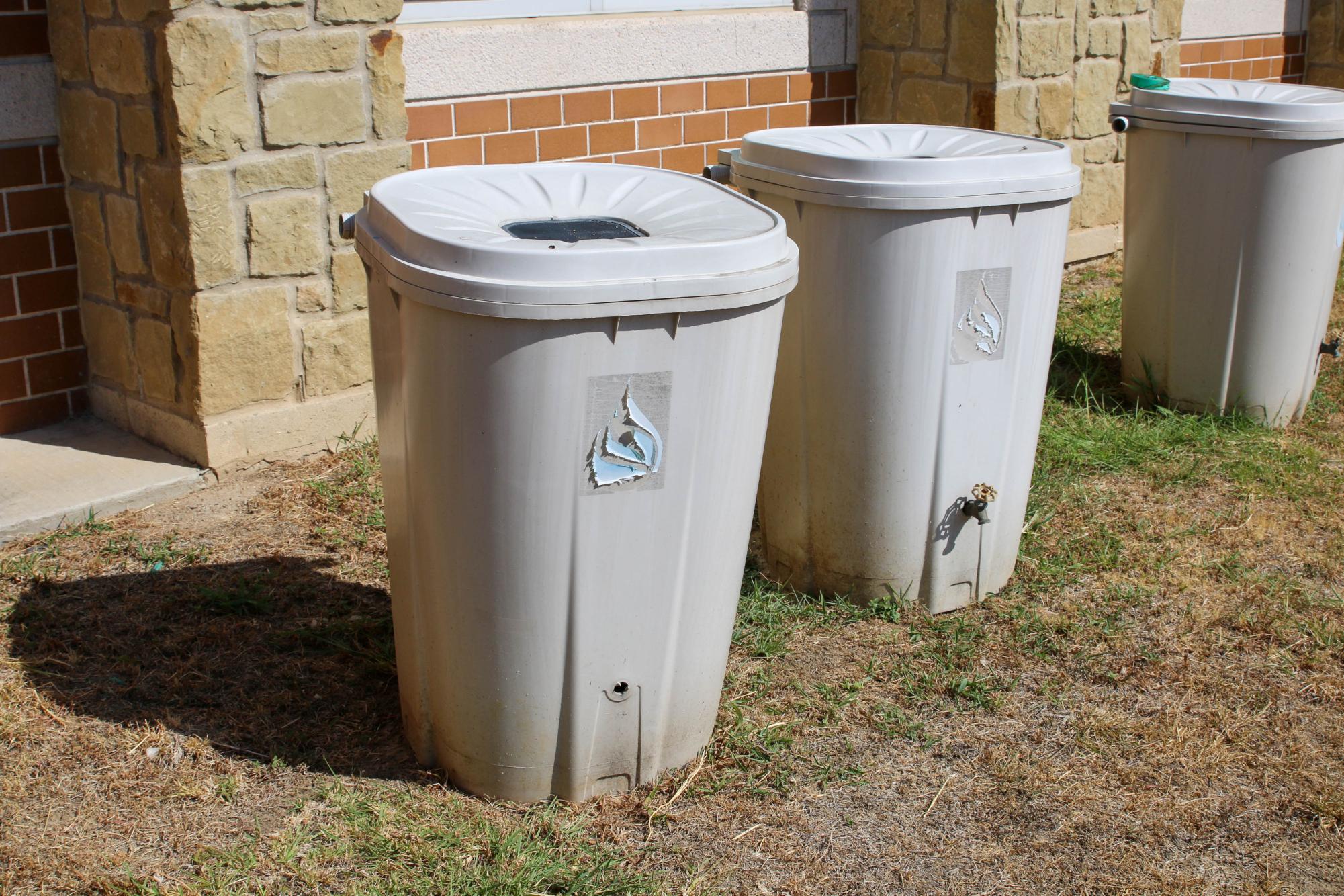Hued a violent shade of royal blue, the dark interior of the bin is a habitat for lost assignments and crumpled ideas. Pages of all colors, empty water bottles and cans once full of energy drinks lie desolate at the bottom. The contents collide together as they are tipped into a garbage bag, heading to their final destination: the landfill.
Entering another year of a recycle-free campus, students and staff are considering ways to maintain sustainability while at school. As environmental issues become more prominent on a global scale, they also begin to make their presence known in local academic settings.
“I give a speech on the first day, and I’ll revisit it, but even my students aren’t used to recycling things,” Karen Pearce, anatomy and human body systems teacher, said. “But, it really makes a difference when I’m taking [the recycling] home.”
With recycling no longer an option on campus, many teachers have turned to bringing their bins home with them to recycle. However, this issue is not Vandegrift-specific, as more than 60% of school campuses in the United States don’t recycle.
“I try [to] make things online as much as possible,” AP Environmental Science teacher Christa Rhea said. “Worksheets are big paper users, [but] sometimes it’s necessary. Some labs are a little bit more wasteful for the purpose of learning.”
As the world moves towards a more online environment, teachers are left grappling with research showing that students absorb more information when it’s written, not typed. Thus, various sources report that schools use over 2,000 sheets of paper per day-that’s 360,000 pages per school year.
“I feel like teachers are pretty aware about how much paper they use,” senior and officer of Rake the Lake Tiffany Colston said. “I think sometimes it [gets out of hand], like when students overuse the printer.”
Though students are seen as prime users of paper, they have also become vital in the advocacy for sustainability. For example, Rake the Lake works to clean up Austin’s lakes and support environmentally friendly living in general. Additionally, past projects, including the school garden and rain collection barrels, have allowed students to come together to work towards a more sustainable future.
“I think it’s gonna have to be a student group that is passionate about it,” Ms. Pearce said. “They will take it over. I sponsor HOSA, and those kids are so passionate about stuff that I have to slow them down. That’s the kind of enthusiasm we need for recycling.”
Though pleas for a school supported recycling program are plentiful, there are certain blockades to consider. For instance, the institution of a recycling program would mean significantly more work placed on the shoulders of campus custodians.
“We need to take baby steps,” Ms. Pearce said. “Do we need to do cardboard first? How do we take care of the cardboard? Why do we not have cardboard recycling anymore? Where did it go? What’s the story with it? I don’t know. Just start[ing] with one thing.”
Issues with sustainability are vast, and with so many to address, finding solutions can be difficult. Though recycling is many teachers’ ideal first step, there are even larger scale ideas to be considered.
“When they were [constructing] building three, I asked if they could put in solar panels, and they laughed at me. That wasn’t surprising, I get laughed at a lot,” Ms. Pearce continues. “[But] we have almost a square mile of flat surface, why don’t we not have solar panels on every single school?”
Though things like solar panels and even instituting a recycling program are large scale projects, there are things that individual students and staff can do to shrink their environmental impact. Using reusable bags, composting, and thrifting or buying second hand whenever possible are just some of the many swaps that can be made.
“If we don’t start cutting it back, [our] kids are going to have trouble,” Ms. Pearce said. “It’s not [about] me, it’s not bothering me. But it’s getting worse.”



